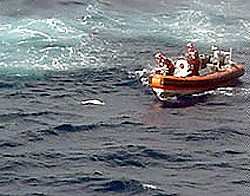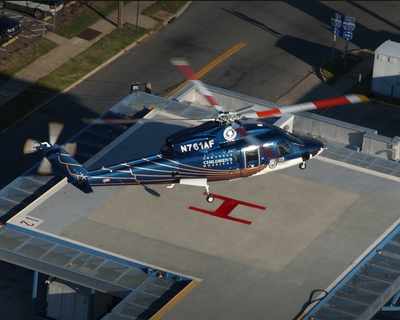NTSB Now Investigating
 Unocal Corporation said Tuesday the
remaining two passengers have been recovered by company search
crews and have been released to the Galveston County Medical
Examiner's office for identification.
Unocal Corporation said Tuesday the
remaining two passengers have been recovered by company search
crews and have been released to the Galveston County Medical
Examiner's office for identification.
They were among 10 people lost when their helicopter was lost in
the Gulf of Mexico. The aircraft disappeared from radar en route to
an oil exploration ship off the Texas coast last week. The
helicopter carried a pilot, a co-pilot and eight workers.
Bodies and debris that included a life jacket with the name of
helicopter owner Era Aviation Inc. were found 60 miles south of the
island city of Galveston TX by an offshore supply ship and a Coast
Guard cutter. The Coast Guard identified the pilot as Tim O'Neal of
El Lago, but did not identify the co-pilot or the eight workers.
The helicopter was chartered by the El Segundo (CA) based oil
company Unocal.
The Coast guard reports that the Sikorsky S-76 helicopter (file
photo of type, below) left Galveston Tuesday evening with a crew of
two and eight passengers. The pilot made his last radio contact
around 7 p.m. CST (8 p.m. EST), reporting a position 90 miles south
of the city. The helicopter was bound for the Discoverer Spirit, an
835-foot drill ship owned by offshore drilling contractor
Transocean Inc., that was 130 miles east of South Padre Island,
Texas.

NTSB Investigation Update
The aircraft, chartered by Unocal of Houston (TX), departed
Scholes International Airport near Galveston at approximately 6:45
p.m. CST. Its intended destination was High Island A 557 refueling
platform, and then an offshore drilling ship. There were two crew
members and 8 passengers aboard.
At 7:23 p.m., the company dispatcher attempted to contact the
pilot of the aircraft but received no response. Floating wreckage
was found the following day, and a debris field was located in the
early morning on March 26, about 70 miles offshore. The debris
field is 300 feet by 600 feet and sits in 180 feet of water. The
wreckage is reported to be extremely fragmented. The remains of all
ten occupants have been recovered.
There are five vessels involved in the search and recovery
operation. Most of the aircraft's wreckage has been raised to the
ocean surface and will be delivered to a facility in Lake Charles,
Louisiana, for examination by the Safety Board's team.
The cockpit voice recorder (CVR) has been recovered and has been
transferred to the Safety Board's laboratory in Washington (DC). It
is of solid state design with 30-minute recording capability
(earlier, preliminary information from the company that this was a
2-hour recorder was incorrect). Only one channel of the CVR was
recording, the cockpit area microphone. Because of high ambient
noise in the cockpit, the recording is unusable for voices. A sound
spectrum analysis is being conducted on the recording.
The flight crew records have been reviewed. The captain had
7,256 total hours as of the end of February, including 5,291 as
pilot in command of helicopters. His Air Transport Pilot license
was in rotary and multi-engine fixed wing aircraft. His total time
flying in the Gulf of Mexico was almost 3,900 hours. The second in
command had 1,930 total hours, with 1,372 as pilot in command of
helicopters. He had a commercial rotorwing license and was a
certified instrument flight instructor. His total Gulf time was
1,013 hours. Both pilots had attended S-76A (file photo of type,
below) recurrent training in February.

On the morning of the accident, the airframe had 10,075 hours,
and the engines had 4,519 and 2,052 hours respectively. The day
before the accident a 30-hour inspection and a 300-hour inspection
on the main rotor blade were accomplished. The 25-hour tail rotor
spar inspection and an airworthiness check had been accomplished
two hours before the aircraft departed.
The Safety Board's team is led by Investigator-in-Charge Lorenda
Ward. Parties to the investigation are the Federal Aviation
Administration, ERA Aviation, Sikorsky and Unocal.
 ANN's Daily Aero-Linx (04.15.24)
ANN's Daily Aero-Linx (04.15.24) Classic Aero-TV: 'No Other Options' -- The Israeli Air Force's Danny Shapira
Classic Aero-TV: 'No Other Options' -- The Israeli Air Force's Danny Shapira Aero-News: Quote of the Day (04.15.24)
Aero-News: Quote of the Day (04.15.24) Airborne 04.16.24: RV Update, Affordable Flying Expo, Diamond Lil
Airborne 04.16.24: RV Update, Affordable Flying Expo, Diamond Lil ANN's Daily Aero-Term (04.16.24): Chart Supplement US
ANN's Daily Aero-Term (04.16.24): Chart Supplement US





